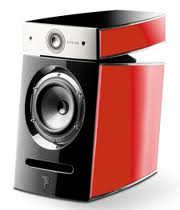 For some, a good loudspeaker is one that has very extended bass. The Hi Fi industry has learned a lot about squeezing quarts from pint pots in the area of bass output. For others it will be ‘neutrality’ – BBC engineering had a requirement for low colouration monitors that persuaded many Hi Fi enthusiast to regard this as most important thing. Then there are people who seek a smooth sound, and lack of harshness is the number one criterion for picking a speaker.
For some, a good loudspeaker is one that has very extended bass. The Hi Fi industry has learned a lot about squeezing quarts from pint pots in the area of bass output. For others it will be ‘neutrality’ – BBC engineering had a requirement for low colouration monitors that persuaded many Hi Fi enthusiast to regard this as most important thing. Then there are people who seek a smooth sound, and lack of harshness is the number one criterion for picking a speaker.
Our experience shows that there are far more fundamentally important issues when listening to music, that can be effectively engineered out of existence by designing speakers to fulfil the design criteria above.
When listening to music we are trying to recreate an experience where (more often than not) a bunch of musicians are playing together, on instruments playing over several octaves of frequency range. To cover this range effectively usually requires several drive units to be deployed, each covering a limited frequency range, then joining these units seamlessly together through a ‘crossover’ unit – a set of inductors, capacitors and resistors that act as filters. These filters introduce time shifts between the drive units, causing time distortions. The time smear caused by complex crossover networks also reduces the loudspeakers ability to track dynamic changes accurately. The simple fact is, if you design your loudspeaker to optimise any of the criteria outlined in the first paragraph, you will almost certainly damage the ‘time coherence’ of the loudspeaker, and adversely affect its effective ‘dynamic’ ability! In our experience, these are the two ‘must have’ elements if you want to reproduce a musical performance rather than aural wallpaper.
So, why these criteria rather than the others?
Every time we enter a new concert hall, or hear a new PA system, we haven’t a clue as to what distortions are being introduced that change the sound we hear – bass response, instrument colour etc. However, unless the hall / PA is very distorted, we find it very easy to adapt to our new environment, and can get on with enjoying the music.
On the other hand, if the musicians sound like they are not keeping time properly, or are inexpressive and bland, no matter how ‘nice’ the PA, the music will be bland or unintelligible (or both).
Most of the speakers we stock are chosen because of their ability in the time domain, and their ability to reproduce dynamic range.
So, if it’s so important, why does nobody mention it?
Imagine you own a Hi Fi magazine. Readers come and go, an advertiser is for life. What good would it do you to alienate 90% of your loudspeaker advertisers?
If you are interested in finding out whether the loudspeakers we stock are just what you are looking for, book an appointment with us, and have a listen.
Of course, if you just want a nice sound, or most powerful bass… you will probably have to look elsewhere.
